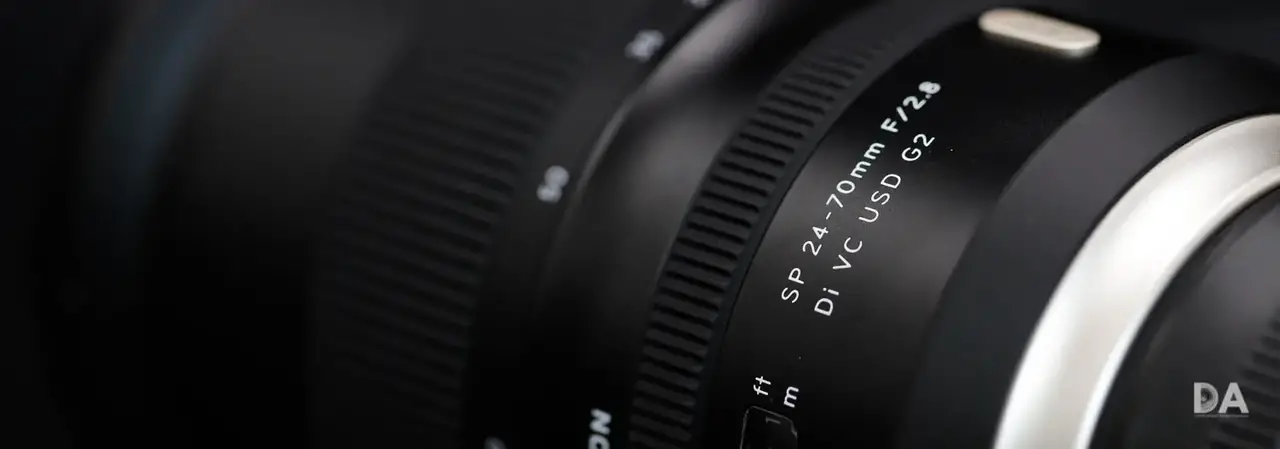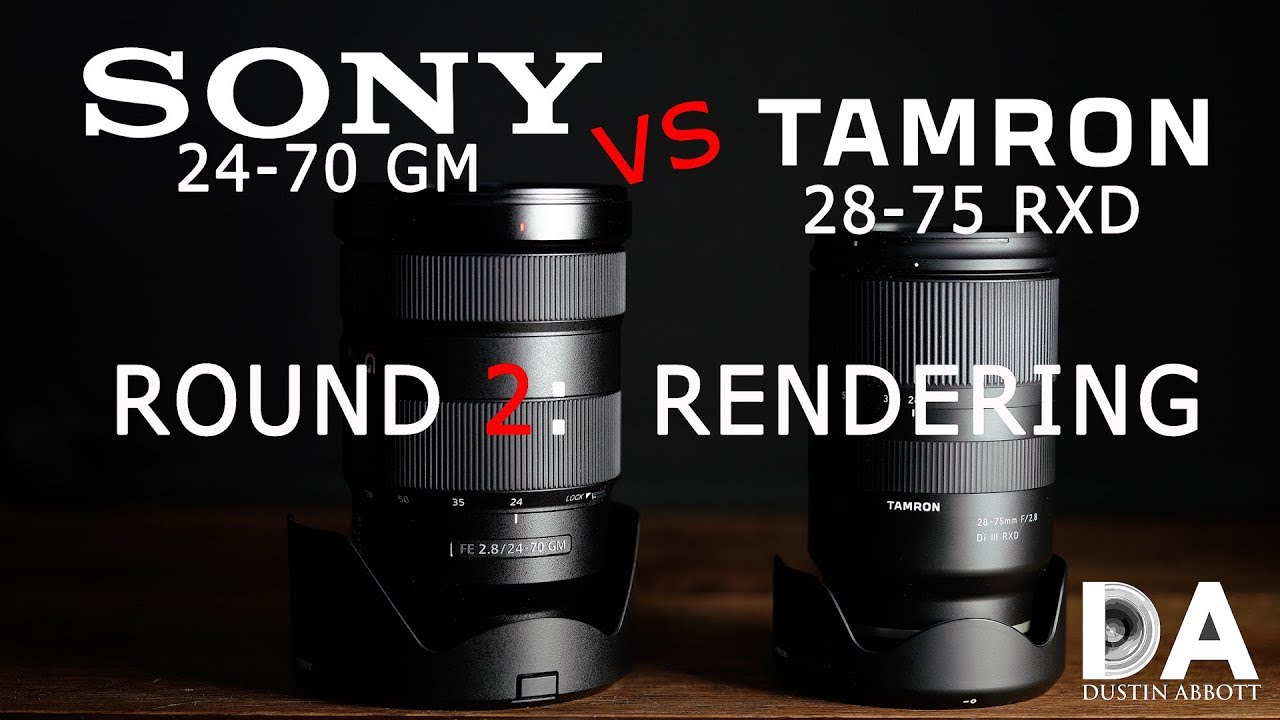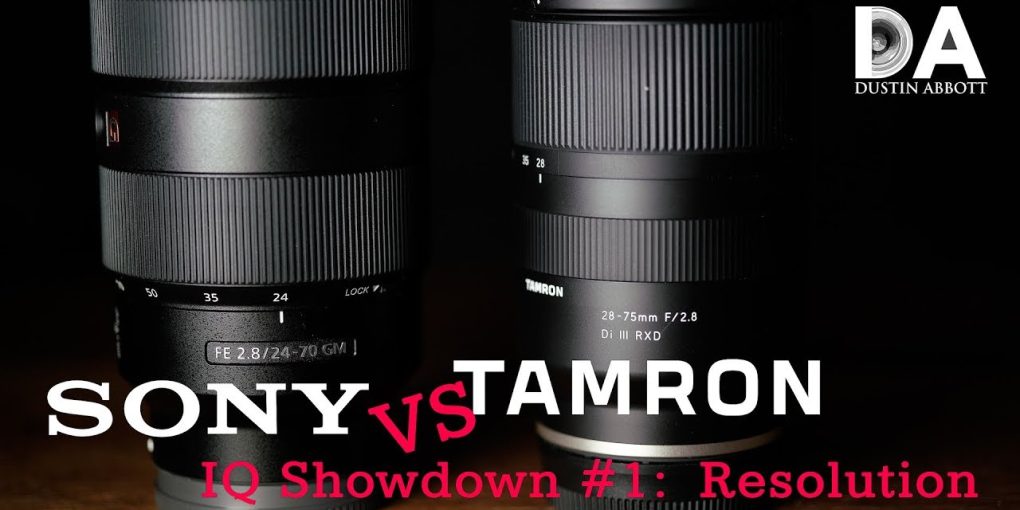Tamron 28-75mm F/2.8 vs Sony 24-70 F2.8: The Ultimate Lens Showdown
The Tamron 28-75mm f/2.8 lens offers sharper and lighter performance, a better overall zoom range, and a more compact design compared to the Sony 24-70mm f/2.8 lens. Additionally, the Tamron lens provides a slightly different bokeh effect with sharper, more nervous highlights.
Overall, the Tamron lens is a great choice for photographers looking for superior image quality, convenience, and versatility in a zoom lens. With so many options available in the market, choosing the right lens for your camera can be a daunting task.
Two popular contenders in the zoom lens category are the Tamron 28-75mm f/2. 8 and the Sony 24-70mm f/2. 8. We will compare these two lenses and explore their features, performance, and suitability for different photography needs. Whether you are a professional photographer or an enthusiastic hobbyist, understanding the key differences between these lenses will help you make an informed decision and enhance your photography experience. Let’s dive into the details and discover which lens is the better option for you.

Credit: dustinabbott.net
Table of Contents
- Comparison Of Tamron 28-75mm F/2.8 And Sony 24-70 F2.8
- Build And Design
- Image Quality
- Focusing Performance
- Versatility And Portability
- Expert Opinions And User Reviews
- Professional Photographers’ Verdict
- Photography Community’s Feedback
- Pros And Cons From Users
- Frequently Asked Questions Of Tamron 28-75mm F/2.8 Vs Sony 24-70 F2.8
- What Is The Difference Between 24 70 And 28-75 Lenses?
- How Much Does A Sigma 24 70 Weight Compared To A Tamron 28-75?
- Is The Tamron 28-75 Sharp?
- Does Tamron 28 75mm F 2.8 Have Image Stabilization?
- Conclusion
- CallofPhotography
Comparison Of Tamron 28-75mm F/2.8 And Sony 24-70 F2.8
The Tamron 28-75mm F/2. 8 lens offers sharper images, lighter weight, a better overall range, and a more compact design compared to the Sony 24-70 F2. 8 lens. Additionally, the Tamron lens is easier to use, making it a great choice for photographers.
Build And Design
When it comes to build and design, both the Tamron 28-75mm F/2.8 and the Sony 24-70 F2.8 are well-built lenses that exude quality. Let’s take a closer look at the key differences: – Tamron 28-75mm F/2.8: This lens boasts a compact and lightweight design, making it a great choice for photographers on the go. It features a sleek black finish and a solid construction that feels durable in the hand. The zoom and focus rings are smooth and easy to operate, providing a pleasant shooting experience. – Sony 24-70 F2.8: Sony’s lens also showcases a robust build quality and a professional-looking design. It has a slightly larger size compared to the Tamron lens, which may be a consideration for photographers looking for a more substantial feel. The zoom and focus rings are well-damped, giving a satisfying tactile feedback.Image Quality
When it comes to image quality, both lenses deliver exceptional results with their wide aperture capabilities. Here’s a breakdown of their performance: – Tamron 28-75mm F/2.8: This lens produces sharp and detailed images throughout its focal range. The F/2.8 aperture allows for impressive low-light performance and beautiful background blur. While some photographers may notice slightly more vignetting and distortion at the wider end of the zoom range, these can easily be corrected in post-processing. – Sony 24-70 F2.8: Sony’s lens also delivers outstanding image quality, especially in terms of edge-to-edge sharpness. The F/2.8 aperture ensures excellent low-light capabilities and a pleasing bokeh effect. This lens exhibits minimal vignetting and distortion, resulting in clean and distortion-free images.Focusing Performance
When it comes to autofocus speed and accuracy, both lenses perform admirably. Here’s a closer look at their focusing capabilities: – Tamron 28-75mm F/2.8: The Tamron lens features a fast and accurate autofocus system that locks onto subjects quickly and reliably. It also has a quiet focusing motor, making it suitable for both photography and videography. This lens excels in capturing fast-moving subjects with its snappy focusing performance. – Sony 24-70 F2.8: Sony’s lens is known for its impressive autofocus capabilities, thanks to its advanced focusing technology. It quickly and accurately acquires focus, even in challenging lighting conditions. Whether you’re shooting action or portraits, this lens offers reliable and precise autofocus performance.Versatility And Portability
In terms of versatility and portability, the Tamron 28-75mm F/2.8 has a slight advantage over the Sony 24-70 F2.8. Here’s why: – The Tamron lens covers a versatile focal length range of 28-75mm, making it suitable for a wide range of photography genres, including landscapes, portraits, and street photography. Its compact and lightweight design makes it easy to carry around, ensuring that you never miss a shot. – While the Sony lens also offers versatility with its 24-70mm focal length range, it is slightly larger and heavier than the Tamron lens. However, for photographers who prioritize absolute image quality and robust construction, the extra size and weight may be a worthwhile trade-off. In conclusion, both the Tamron 28-75mm F/2.8 and the Sony 24-70 F2.8 are excellent lenses that offer exceptional image quality and performance. The choice ultimately comes down to personal preferences and specific shooting needs.
Credit: dustinabbott.net
Expert Opinions And User Reviews
When it comes to choosing between the Tamron 28-75mm f/2.8 and the Sony 24-70mm f/2.8, it can be helpful to seek expert opinions and user reviews. Understanding the perspectives of professional photographers and the feedback from the photography community can provide valuable insights that can guide your decision-making process. Below, we explore the verdict of professional photographers, the feedback from the photography community, as well as the pros and cons highlighted by users.
Professional Photographers’ Verdict
Professional photographers have extensively tested and compared the Tamron 28-75mm f/2.8 and the Sony 24-70mm f/2.8 to determine their strengths and weaknesses. Many experts praise the Tamron lens for its sharpness, lightweight design, and overall range. They mention that it offers comparable performance to the Sony lens at a more affordable price point. Additionally, professionals appreciate the Tamron lens for its compact size, making it easy to carry and handle during shoots.
Photography Community’s Feedback
The photography community has provided valuable feedback on the Tamron 28-75mm f/2.8 and the Sony 24-70mm f/2.8 based on their real-world usage. Users have noted that the Sony lens produces rounder bokeh highlights with smoother borders, creating a pleasing aesthetic. On the other hand, users mention that the Tamron lens produces bokeh highlights that are more “nervous” with sharp edges, which can be desirable for certain creative effects. Community members also appreciate the ease of use of the Tamron lens, as it offers a user-friendly experience for both beginners and experienced photographers.
Pros And Cons From Users
| Tamron 28-75mm f/2.8 | Sony 24-70mm f/2.8 |
|---|---|
| + Sharp image quality | + Comparable performance |
| + Lightweight and compact design | + Rounder bokeh highlights with smoother borders |
| + Wide range of focal lengths | – Higher price point |
| + User-friendly and easy to use |
Users highlight the Tamron lens for its sharp image quality and its lightweight, compact design. They appreciate the wide range of focal lengths it offers, making it versatile for various photography needs. On the other hand, users mention that the Sony lens produces rounder bokeh highlights with smoother borders, which some photographers prefer. However, it should be noted that the Sony lens comes with a higher price point compared to the Tamron lens.
In conclusion, the expert opinions and user reviews provide valuable insights into the Tamron 28-75mm f/2.8 and the Sony 24-70mm f/2.8 lenses. The Tamron lens is highly regarded for its sharpness, lightweight design, and overall range. Users appreciate its user-friendly experience and the creative effects it can produce. On the other hand, the Sony lens is known for its rounder bokeh highlights and comparable performance. Considering the pros and cons described by experts and users can help you make an informed decision based on your photography needs and preferences.

Credit: m.youtube.com
Frequently Asked Questions Of Tamron 28-75mm F/2.8 Vs Sony 24-70 F2.8
What Is The Difference Between 24 70 And 28-75 Lenses?
The main difference between a 24-70 lens and a 28-75 lens is the focal length range. The 24-70 lens has a wider range, allowing for more versatility in capturing different types of shots. The 28-75 lens has a narrower range but may offer other benefits such as sharper images or a more compact design.
How Much Does A Sigma 24 70 Weight Compared To A Tamron 28-75?
The Sigma 24-70 weighs more compared to the Tamron 28-75.
Is The Tamron 28-75 Sharp?
The Tamron 28-75 lens is known for its sharpness, lighter weight, and overall better range compared to other lenses. It also offers a smaller and more compact design, making it easy to use.
Does Tamron 28 75mm F 2.8 Have Image Stabilization?
No, the Tamron 28 75mm F 2. 8 lens does not have image stabilization.
Conclusion
The Tamron 28-75mm f/2. 8 lens proves to be the better option compared to the Sony 24-70 f/2. 8 lens. The Tamron is not only sharper and lighter, but also offers a better overall range. Its smaller and more compact design adds to its ease of use.
Additionally, the Tamron lens produces highlights with sharp borders, giving your photos a unique touch. Overall, the Tamron 28-75mm f/2. 8 lens is a fantastic choice for photographers looking for a high-quality and versatile lens.
I am a photography enthusiast turned blogger, sharing my passion and expertise on her blog, "CallofPhotography." Growing up surrounded by nature, I developed a love for capturing moments through my lens. After studying Fine Arts with a focus on photography, I launched my blog to share tutorials, gear reviews, and my own photographic work. Through engaging storytelling, I invites readers to join her visual journey, inspiring and empowering photographers of all levels worldwide.


